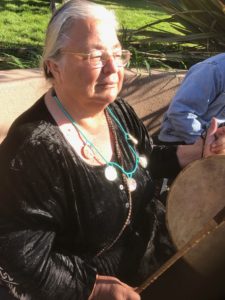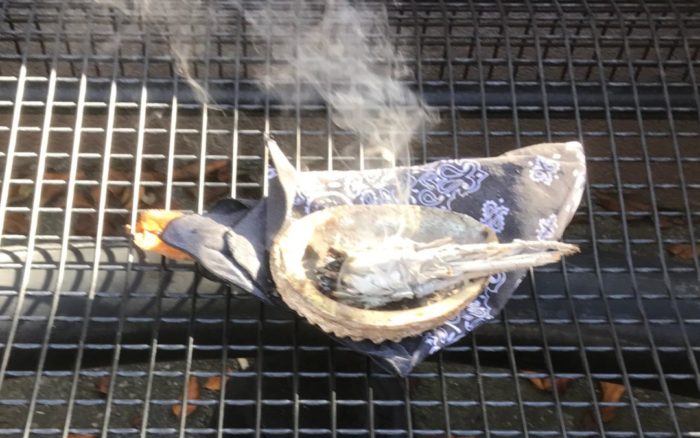The Sacred and Land Use Issues:Remembering The Whole
When we exited the Napa County Administration Building for the noon break of the Walt Ranch appeal hearings, I was surprised. Upwards of a hundred people rallied on the lawns holding signs of protest. Walt Ranch is an ambitious project seeking to cut almost 15,000 mature trees for 35 lifestyle tract vineyards in one of the most biologically diverse areas of Napa County. Four environmental and citizen groups are appealing the Planning Commission’s approval of this project to the Board of Supervisors, based on a very questionable Environmental Impact Report.
But that is not the topic of this blog. The topic is the sacred. As I walked out that noon, I was also met with the steady beat of a drum coming from a small gathering of indigenous people. The beat, that of the heart, united us. An abalone shell holding a smoldering sage wand rested on a bench nearby. The pungent smoke wafted toward me, reminding me of sweat-lodges I attended throughout the years. For me, white sage is the aroma of the sacred. It hints of that deep interconnection of all beings— as the Lakota say, All my relatives. I asked if I could take pictures, and they agreed. This was just before other amplified music drowned out the beating of the drum.
I loved the other music too. It is not that I didn’t. The musician played variations of protest songs from the years I was a young adult protesting the Vietnam War. Songs that are a call to action.

Charlie Toledo, Director of Suscol Intertribal Council.
But I am also aware of how the calming, meditative beat that opens us to immediacy of the Present was also drowned out– not unlike how the indigenous all my relatives approach to the natural world has been drowned out.
Yet I think the drum set a rhythm for the rally. Strangers talked to each other, respectful but determined to stand for the sovereignty of the trees and the water and the land.
Hanging in the air was the knowledge that before the arrival of our western European ancestors, the North American continent was an agricultural preserve so richly complex that invaders had no idea what they were seeing. Within a century these invaders plundered every resource they could liquidate.
The wound in these land use issues goes back to then. The ancestors of the people sitting in the drumming circle lived here for 60,000 years, according to Director of Suscol Intertribal Council Charlie Toledo’s accounts. Within a few decades, they were mostly wiped out by disease and murder or chased off.
Ironically, after the land was “acquired”—stolen— by western Europeans, property rights became important, and another land ethic was imposed. Nature became a commodity for our exploitation. In some ways, we have come full circle. We protesters are advocating for our governing bodies to consider first the Commons, for the rights of nature over property rights of men. As the meaning of a word is embedded in the mystery of its etymology, the root cause of land use issues revisits us in these battles.
We have a chance to heal this one. It may be our only way of surviving, given the climate changes coming our way—by aligning with the sacred of that beat the reminds us we are all of a piece, we are All Relatives.
